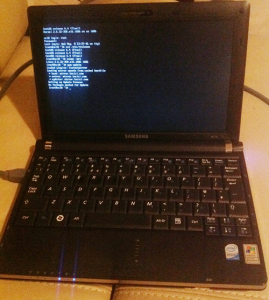 I’ve been recently using Tumblr more to post sketches from all kinds of devices, and naturally I wanted to embed them in some of my websites’ sidebars.
I’ve been recently using Tumblr more to post sketches from all kinds of devices, and naturally I wanted to embed them in some of my websites’ sidebars.
I found the extremely helpful Tumblr Widget plugin by Gabriel Roth for this: install, drag in the widget add Tumblr URL. Done!
I wanted my images to be in a size that the widget didn’t offer, so I did some tweaking – perhaps it’ll help if you’re in a similar situation.

 This is a step-by-step guide on how to replicate an existing MySQL server. The server is live and contains data and needs a constant backup companion.
This is a step-by-step guide on how to replicate an existing MySQL server. The server is live and contains data and needs a constant backup companion.